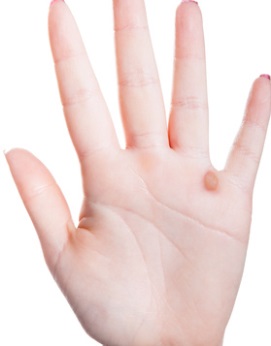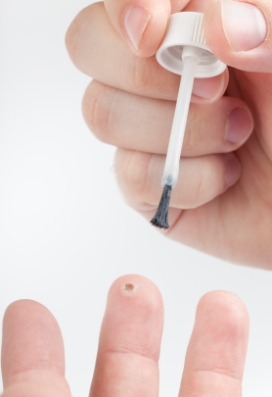
What is a wart? That’s a good question and a common one. While most people are familiar with warts, many don’t actually know what they. Warts are skin growths, usually small skin growths although sometimes they do get rather large. They are benign, or noncancerous, and usually harmless. Warts are very common and between seven and 10 percent of all people have at least one. Still, many people don’t like the way they look and ask how to remove them. We’ll tell you about your options for removing unwanted warts.
We are also frequently asked are warts contagious. They are and we’ll tell you about that in a moment.
What is a Wart Caused by?
Warts are caused by a virus called human papillomavirus, also known as HPV. Unlike most other viruses, though, it can take as long as 18 months after you contract HPV before you see symptoms, namely warts. Compare that to other viruses, like the common cold, in which symptoms typically show up within two days, or influenza (the flu), in which symptoms typically show up within four days. Even with chickenpox, symptoms show up in 10 to 14 days.
Are Warts Contagious?
Absolutely! Like most other viruses, human papillomavirus is contagious. Unlike some viruses, though, HPV cannot be transmitted by things like coughing or sneezing. Of course, HPV does not cause respiratory symptoms like coughing and sneezing, either, the way things like a cold or flu do.
So what is a wart transmitted by? Human papillomavirus is transmitted through direct and indirect contact. Either you touch someone that has warts or you touch something they touched, like sharing a towel or razor with someone that has HPV. Genital warts can be transmitted through sexual activity. Since it takes so long for warts to develop after the virus has been contracted, though, in many cases people never know how they got it.
Children seem to be more susceptible to warts than adults, though adults certainly get them too. You’re more likely to get HPV if your skin is broken or damaged in some way, or even if your skin is just softened like it is when you get out of a swimming pool. That’s why people often get warts on their feet through indirect contact by walking barefoot on locker room floors where other people with warts have walked. It’s possible to contract the virus that causes warts even if your skin is healthy and intact, though.
What is a Wart Cured by?

Well, technically they can’t be cured. The American Academy of Dermatology explains that there is no cure for human papillomavirus. Unfortunately, there are no cures for many viruses, including the common cold.
Warts can be removed from the skin, though. There are numerous techniques used to remove warts, including over-the-counter medications that are applied topically, and procedures that must be performed by physicians, including burning them off (known as electrotherapy), freezing them off (known as cryotherapy), and cutting them off (excision). The best way to remove warts in your case may depend on a number of factors, including the type and location of your warts and your health in general. Please talk to your doctor if you have questions about the best method of wart removal for you.
Some people prefer natural treatments, which carry a much lower risk of side effects, do not require a trip to a doctor’s office, and are more affordable than things like electrotherapy and cryotherapy. We like Naturasil Wart Remover, which contains a homeopathic remedy called Thuja Occidentalis 6X, which causes warts to dry up and fall off painlessly. It also contains essential oils like cedar leaf oil and tea tree oil (also known as Melaleuca Alternifolia), used to treat a variety of infections. To learn more about Naturasil Wart Remover, just follow the link to their website.
Ref: AAD
